Knowing how to care for a bonsai tree is extremely challenging. But knowing how to care for bonsai during heatwave is on another level. The exuberant sun and soaring temperatures can stress your bonsai, compromising its health and the aesthetic balance you’ve worked so hard to achieve.
It’s vital to take appropriate measures to ensure your bonsai continues to flourish amid these conditions. This article is designed to equip you with the knowledge and practical tips necessary to safeguard your bonsai against the ravages of a heatwave.
We’ll discuss:
- Recognizing signs of heat stress
- Effective watering techniques
- Adjusting your bonsai’s placement
- Considering soil and fertilizer
- Additional tips for bonsai survival during a heatwave
Recognizing Heat Stress in Bonsai Trees
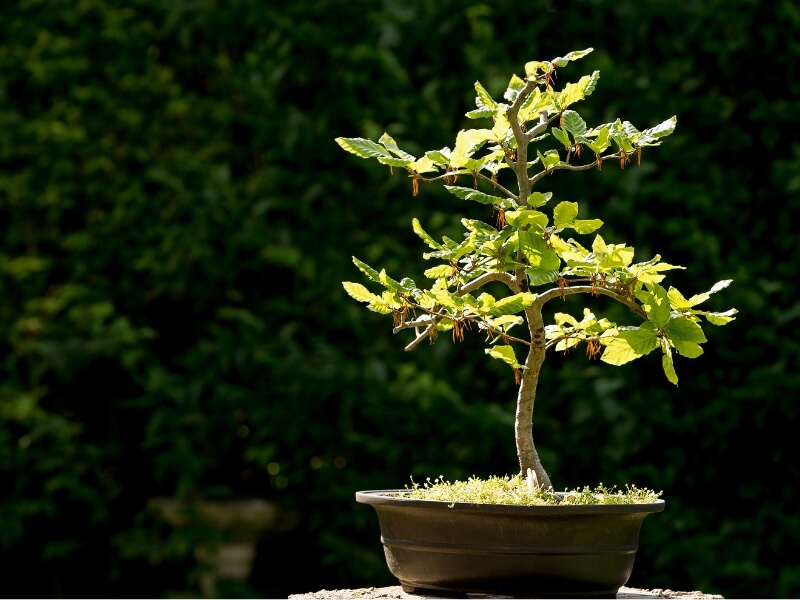
Just like any other living being, your bonsai communicates its distress to you. You just need to know how to interpret the signs.
Let’s explore the various symptoms of heat stress that your bonsai may show during a heatwave. Recognizing these signs of heat stress can provide an early warning, giving you a chance to act and help your bonsai manage during a heatwave.
Wilting or Drooping Leaves
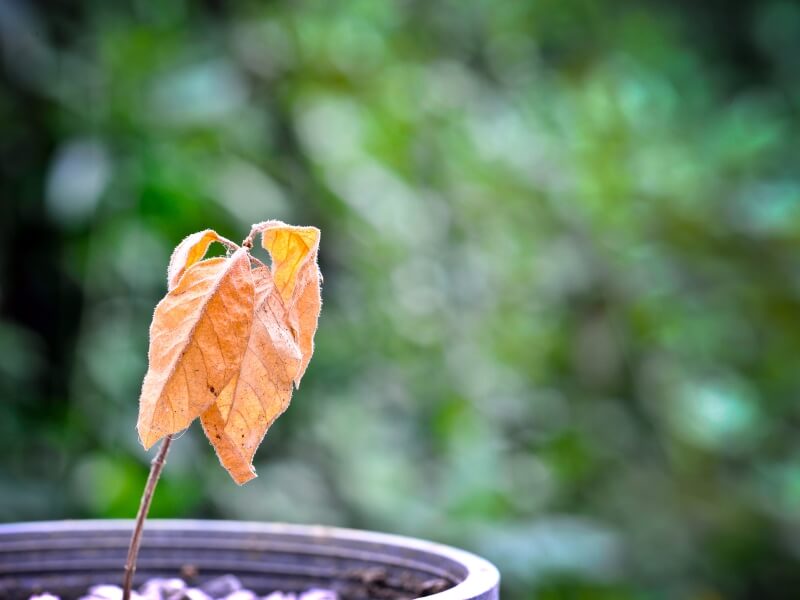
In the dazzling heat of the sun, your bonsai might start to look a bit down, literally. Wilting or drooping leaves can be your bonsai’s SOS call. It’s its way of telling you that it’s not coping with the harsh conditions.
Leaf Scorching
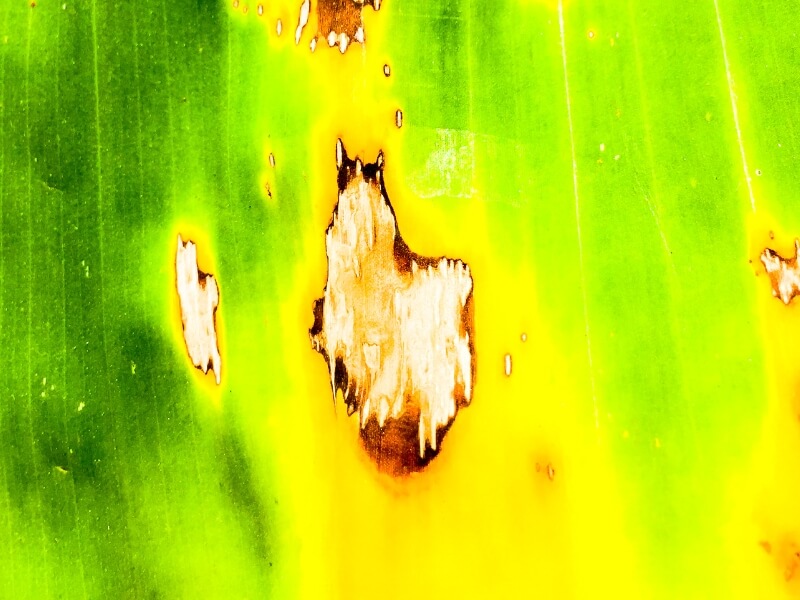
If the leaves of your bonsai appear scorched, it could be a telltale sign of heat stress. Scorched leaves might show brown patches or spots and have a dry, crispy texture.
Yellowing or Browning Leaves
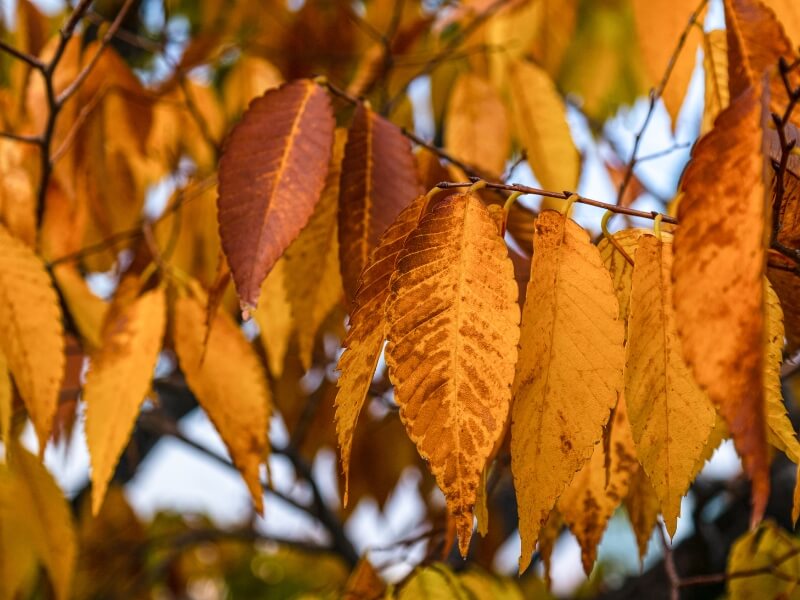
Yellow or brown leaves are another symptom of heat stress in bonsai. Although your bonsai is a hardy little fighter, persistent heat could lead to a loss of its vibrant green color, leaving the leaves yellow or even brown.
Stunted Growth
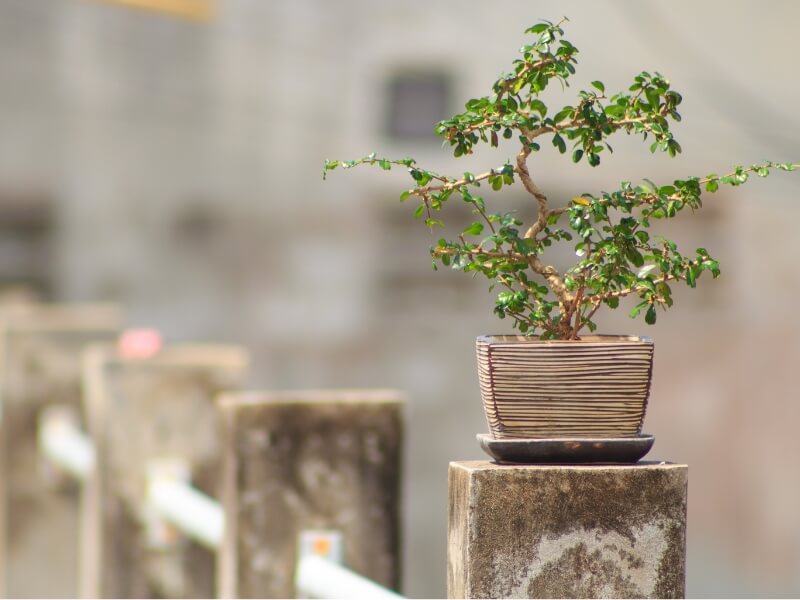
Heatwaves can arrest the growth of your bonsai. If you observe that your bonsai is not sprouting new leaves or branches as it usually would, it might be struggling in the high temperatures.
Watering Techniques for Bonsai During a Heatwave

Gentle care and a thoughtful approach are key when it comes to understanding how to care for bonsai during heatwave.
It may seem like a simple task, but adopting the right watering techniques can greatly impact your bonsai’s ability to thrive in the sweltering summer heat.
The aim is to provide your bonsai with enough hydration to keep it healthy while avoiding the risk of over-watering, which can lead to root rot. Here are some techniques to consider:
Deep Watering
Deep watering is an essential part of knowing how to care for a bonsai during a heatwave since it ensures that moisture penetrates into the deeper layers of the soil, providing a reservoir of water that your bonsai tree can access throughout the sweltering day.
To practice deep watering, slowly introduce water until it starts to seep out from the drainage holes at the bottom of your bonsai pot.
This method guarantees that the entire root system has access to much-needed hydration.
Frequent and Consistent Watering
Heatwaves can cause the soil in your bonsai pot to dry out rapidly.
Hence, during these periods, it’s crucial to water your bonsai more frequently and consistently than you usually would.
Check the soil’s moisture levels at least twice a day and water as needed to ensure the soil stays adequately moist.
Watering During Cooler Times of the Day
The best times to water your bonsai during a heatwave are early morning and late evening when temperatures are generally cooler. Watering at these times reduces the rate of water evaporation and allows your bonsai to make the most of the hydration it receives.
Using a Water Tray
A water tray, also known as a humidity tray, can be a great accessory to help your bonsai fight the heat.
Fill the tray with water and place your bonsai pot on it. As the water evaporates from the tray, it creates a humid microclimate around your bonsai, helping to keep it hydrated.
Misting
Misting your bonsai trees, especially their immediate surroundings, is another effective way to combat the effects of high temperatures. This practice helps to increase the humidity around the tree and can also help cool its leaves.
However, misting should not replace watering, as it only provides surface-level hydration.
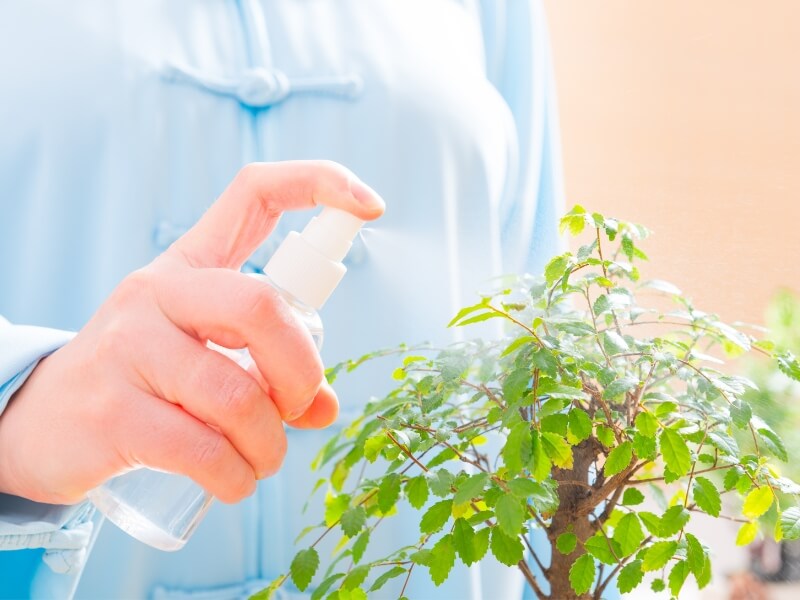
Remember, each bonsai is unique, and understanding your particular bonsai’s water needs is paramount to its survival during a heatwave.
Forge a bond with your bonsai, listen to its needs, and respond with the love and care it deserves.
Adjusting Your Bonsai’s Placement During a Heatwave
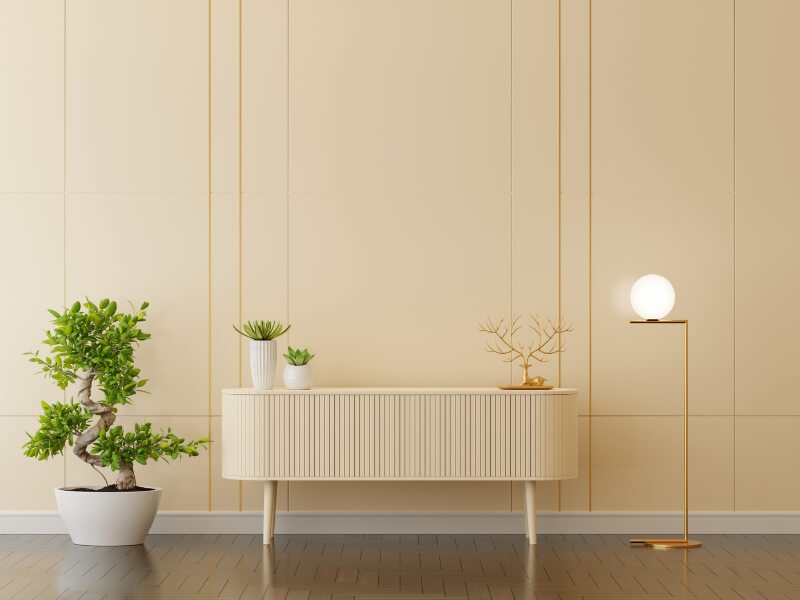
Just like you, your bonsai also seeks shelter during the blistering heat. Understanding how to care for bonsai during heatwave involves considering the place where you keep your bonsai, as it can greatly impact its health, especially during a heatwave.
Let’s discover how we can smartly adjust our bonsai’s placement to protect it from excessive heat and sun exposure.
The Impact of Location
The intense summer sun can be too harsh for your delicate bonsai. Prolonged exposure to direct sunlight intensity can lead to leaf scorching and dehydration. It’s important to understand that while your bonsai cherishes the sun, too much of it during a heatwave can cause stress.
Seeking Shelter in Shaded Areas
A bit of shade can be a lifesaver for your bonsai in a heatwave. Consider moving your bonsai to an outdoor area that’s shielded from the sun’s piercing rays.
A spot under a large tree or a patio can work wonders.
Remember, the goal is to protect your bonsai from excessive sun, not to keep it in complete darkness. Your bonsai still needs some sunlight to carry out photosynthesis.
Moving Bonsai Indoors
If external shade is hard to come by, don’t worry. A well-lit indoor room with access to indirect sunlight can be a perfect haven for your bonsai during a heatwave.
A window sill or a table near a window can be an ideal spot. This way, your bonsai can bask in the light without bearing the brunt of the heat.
For professional growers, dealing with the intense heat of summer can be challenging. Thankfully, the shade cloth professional growers use is a crucial asset. It provides a convenient solution, creating a shaded environment without requiring the relocation of far too many trees.
Building Temporary Shelters
When the heatwave is unbearable and other options aren’t feasible, erecting a temporary shelter can be a practical choice.
Using a shade cloth or a garden umbrella can create a protective shield for your bonsai against the sun.
Adjust the coverage as per the sun’s movement to ensure your bonsai gets just the right amount of sunlight.
Contemplating Soil and Fertilizer Choices
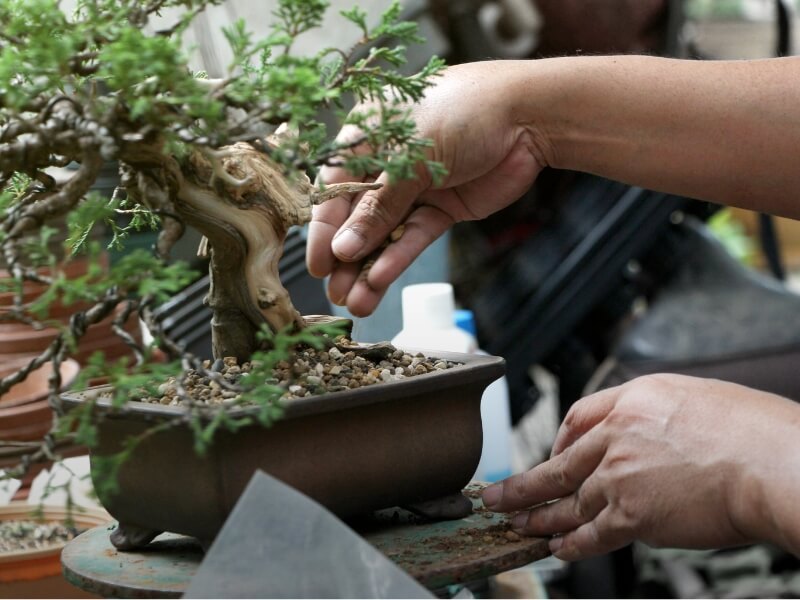
When the sun is blazing, the right soil and fertilizer become crucial allies in your bonsai’s battle against the heat.
Below, we will explore the significance of soil and fertilizer, as well as provide suggestions for heat-resistant options.
The Role of Soil in Heat Resistance
Soil does more than just anchor your bonsai—it also serves as a reservoir for water and nutrients.
In a heatwave, the soil’s ability to retain moisture becomes even more critical.
Choosing a soil mix that can hold onto water without becoming waterlogged is a wise move.
Look for soil mixes that contain high proportions of akadama, an absorbent clay that’s great for moisture retention.
Organic Fertilizer: The Gentle Approach
A heatwave can stress your bonsai, making it more vulnerable to damage from chemical fertilizers.
An organic fertilizer can be a gentler alternative, offering a slow release of nutrients that won’t overwhelm your tree.
Opt for an organic fertilizer high in potassium, which helps improve heat tolerance. Note: avoid applying high nitrogen fertilizer during extremently hot weather days.
Modifying Your Fertilizing Schedule
When the heat is on, your bonsai’s nutritional needs change. While it’s crucial to maintain a regular fertilizing regimen, take care not to overdo it.
Too much fertilizer can lead to excessive foliage growth, which can put additional strain on your tree during a heatwave.
Consider reducing your fertilizer application frequency during these periods.
The Art of Soil and Fertilizer Balance
Caring for a bonsai is an art that involves mastering the balance between the right soil and fertilizer. Attending to your bonsai with careful attention and care will be rewarded with its health and beauty, making it all worthwhile.
Additional Tips for Caring for Bonsai during a Heatwave
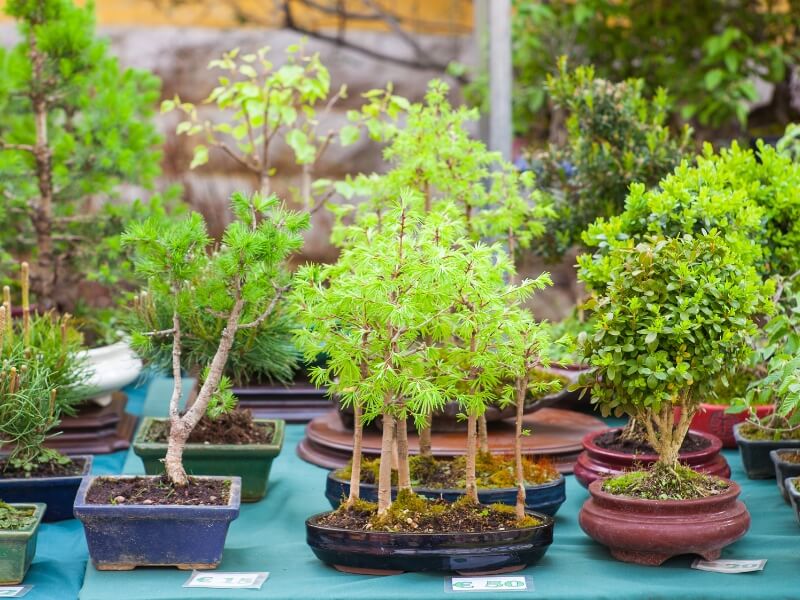
In addition to the key strategies we’ve discussed, here are a few more tips that can accentuate your bonsai care regimen during a heatwave.
Attending to Your Bonsai’s Specific Needs
Every bonsai carries its unique character and demands. Some may require more water, while others may crave less sun.
Paying close attention to your bonsai’s specific needs is essential.
Observe its color, leaf texture, and overall vitality.
Is your bonsai displaying any signs of heat stress? If yes, it might be asking for a change in its care routine.
Regular Checking for Pests
Heatwaves can be an open invitation for pests.
Regularly inspect your bonsai for any signs of pest infestation. Look out for discolored leaves or mottled surfaces, signs of potential issues.
If you discover pests, treat the condition promptly with an organic pesticide to ensure your bonsai stays in peak health.
Avoid Pruning and Repotting During Heatwaves
Heatwaves are stressful times for your bonsai. Avoid adding extra stress by refraining from pruning and repotting during these periods.
These activities can be taxing for your bonsai, as they require considerable energy to heal.
Wait for a cooler spell when your bonsai is less stressed, and can better handle these procedures.
The Sweet Harmony: Bonsai and Summer Heat

Knowing how to care for your bonsai during heatwave is not just about survival—it’s about helping your small yet mighty tree thrive even in the face of adversity.
Your bonsai relies on you for its care, and the right strategies can make a world of difference. From adjusting its location to understanding the right soil and fertilizer balance, each action contributes to its health and beauty.
Remember:
- Pay attention to your bonsai’s unique needs.
- Be vigilant about potential pest issues.
- Avoid pruning or repotting during intense heat.
Each move is a dance, perfectly choreographed in nature’s rhythm.
We encourage you to implement these approaches and watch as your bonsai tree continues to flourish, even when the temperatures soar.
After all, bonsai is not just a hobby—it’s a testament to the resilience of nature and your commitment to nurturing that beauty.
For more insights, tips, and techniques to enrich your bonsai journey, don’t forget to check our other posts on our website.


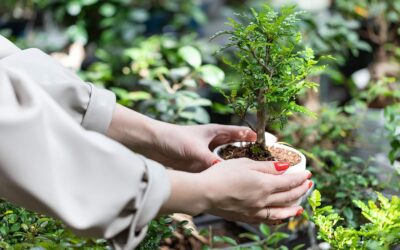
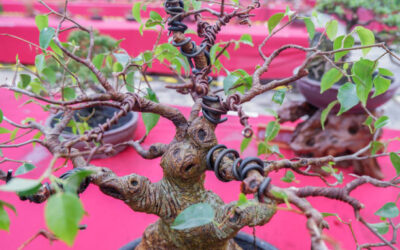
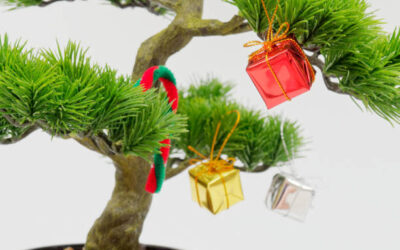
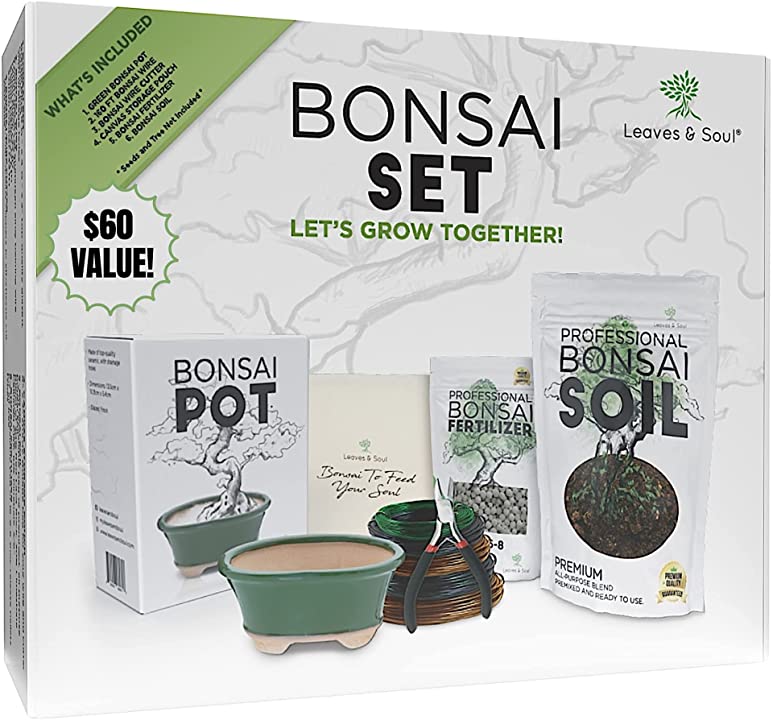
0 Comments